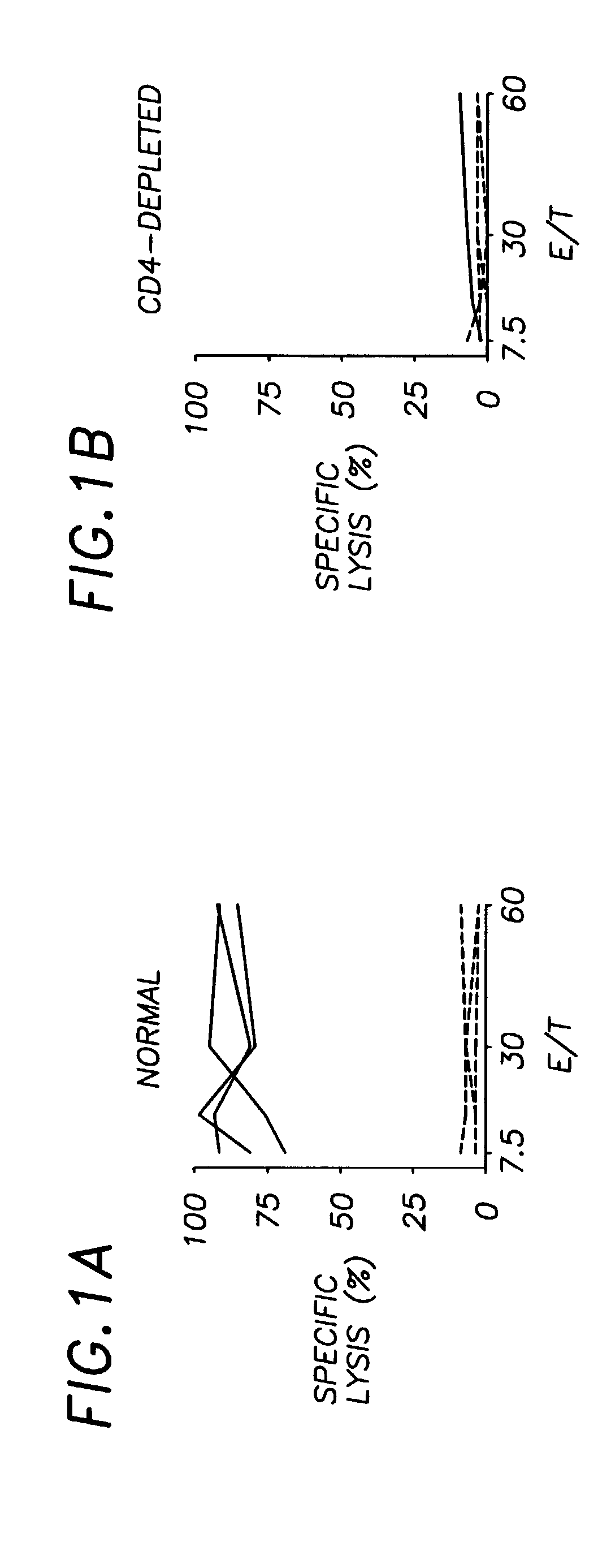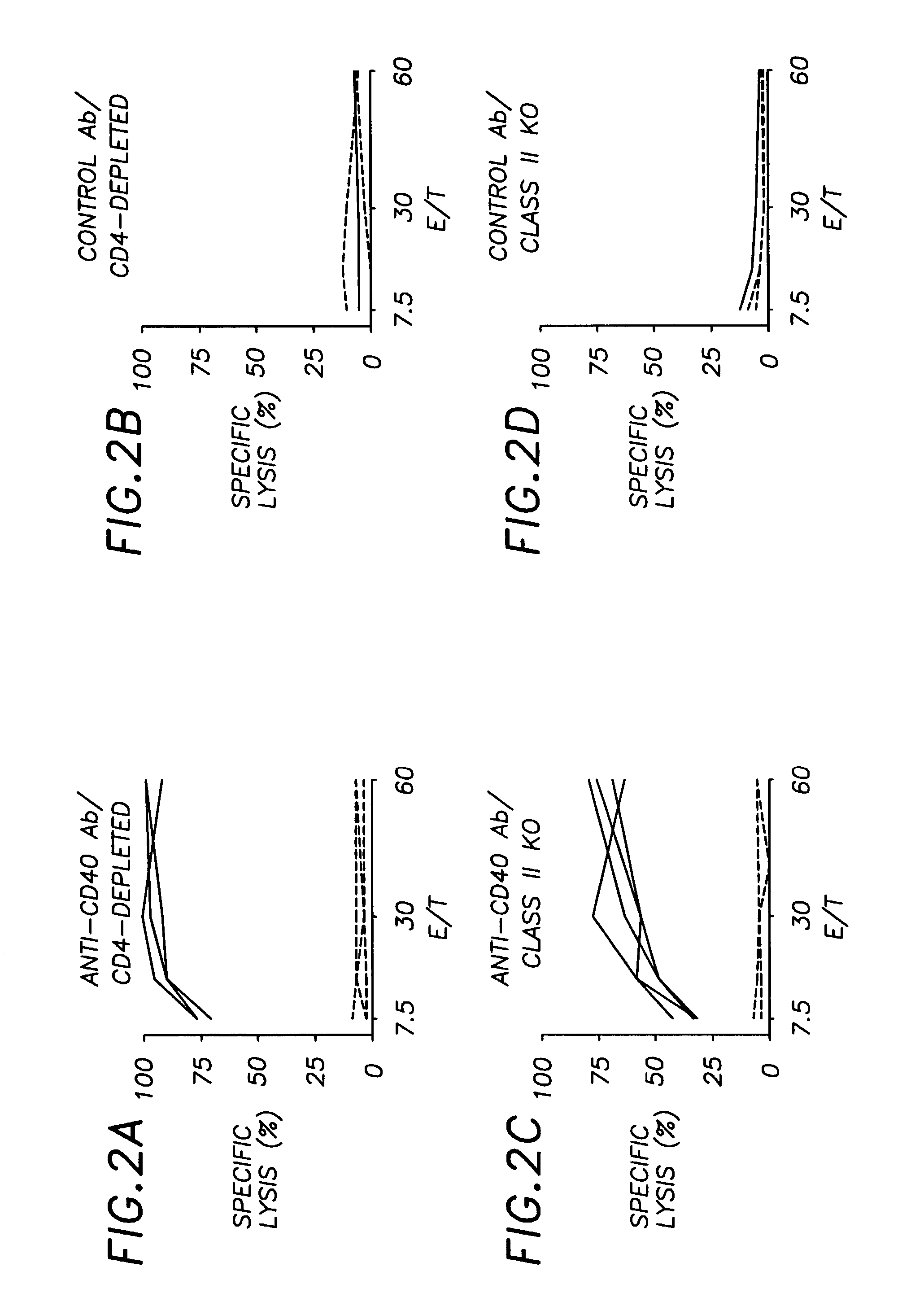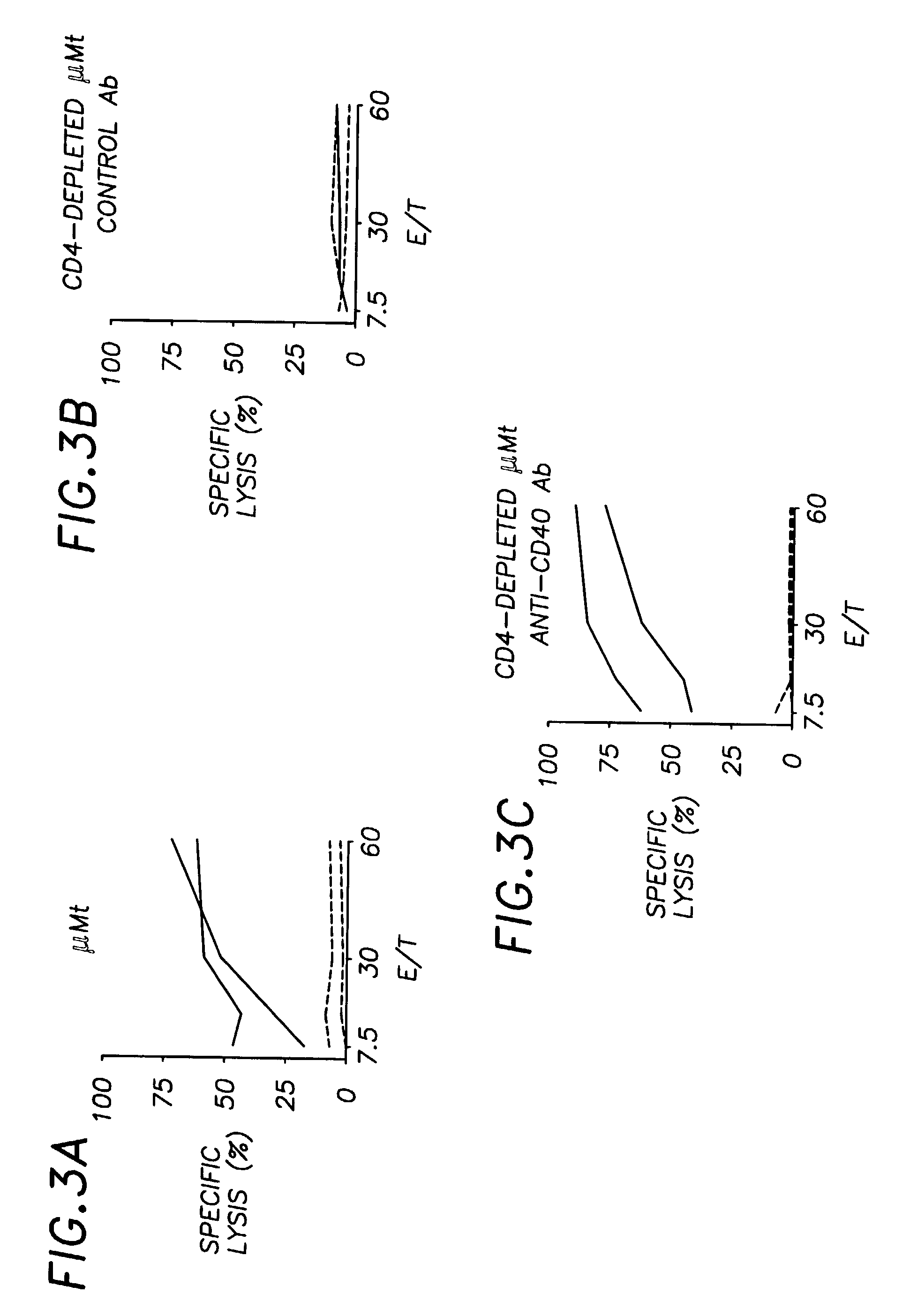CD40 binding molecules and CTL peptides for treating tumors
a tumor and peptide technology, applied in the field of tumor cd40 binding molecules and ctl peptides, can solve the problems of failure to raise ctl immunity, achieve the effect of raising ctl immunity, enhancing the efficacy of peptide-based anti-tumor vaccines, and inducing therapeutic ctl immunity
- Summary
- Abstract
- Description
- Claims
- Application Information
AI Technical Summary
Benefits of technology
Problems solved by technology
Method used
Image
Examples
example 2
Blocking the Ability of CD4+ Helper T Cells to Interact with APC Through the CD40L-CD40 Pathway Prevents Antigen-specific CTL Responses in Normal Mice
[0042]If the CD40L-CD40 interaction represents the physiological pathway used by CD4+ helper T cells to help CTLs, blocking the ability of the CD4+ T cells to interact with APC through CD40L-CD40 interaction would be expected to diminish priming of E1B-specific CTL responses in normal mice. B6 mice were immunized with Ad5E1-BALB / c MECs and then treated with either the CD40L-blocking antibody MR1, or control antibody. Blockade of CD40L results in drastically reduced E1B-specific CTL responses (FIG. 4a) compared to the efficient CTL priming seen in mice receiving the control antibodies (FIG. 4b). The priming defect induced by CD40L blockade was fully restored following CD40 signalling by FGK45 (FIG. 4c). Thus the defect in CTL-priming induced by CD40L blockade lies in the failure of TH cells to transmit, rather than to receive, CD40L-med...
example 3
E1A-specific CTL Unresponsiveness After Peptide Administration
[0043]A previously described model system has been used (Toes et al., J. Immunol. 156:3911 (1996)). It has been shown that s.c. vaccination with the Ad5E1A-derived CTL epitope SGPSNTPPEI (SEQ ID NO: 2 ) in IFA prevents mice from controlling the outgrowth of Ad5E1A-expressing tumors. This indicates that the E1A / IFA vaccine induced suppression rather than induction of E1A-specific CTL immunity. Moreover, administration of the E1A / IFA vaccine to T cell receptor (TCR)-transgenic mice, which express the TCR α and β chains of an E1A-specific CTL clone, strongly suppressed tumor-specific CTL-mediated immunity. These experiments examined the effects of peptide administration on a monoclonal CTL population. To establish whether s.c. E1A-peptide vaccination also induces E1A-specific CTL tolerance at the polyclonal CTL level, wild type (wt) C57BL / 6 mice were injected with either E1A-peptide (FIGS. 5a and 5b) or a control peptide FIG...
example 4
CD40-triggering Strongly Enhances the Efficacy of Peptide-based Anti-cancer Vaccines
[0048]Although the findings described above show that provision of help through CD40-triggering is sufficient to prevent CTL-tolerization after administration of a tolerogenic peptide-vaccine, they do not address the question whether the efficacy of anti-cancer vaccines that normally induce protective immunity, instead of tolerance, can be enhanced by activation through CD40. It was examined whether CD40-triggering in vivo is beneficial to the outcome of vaccination with an HPV16 E7-derived peptide. Vaccination with this peptide induces protective CTL-mediated immunity against a challenge with HPV16-transformed tumor cells. Moreover, this peptide can be used in a therapeutic setting when loaded on in vitro activated DC suggesting that the strength of the anti-tumor response is enhanced when presented by activated DC.
[0049]Mice receiving the E7-peptide in combination with CD40-triggering mounted a mor...
PUM
| Property | Measurement | Unit |
|---|---|---|
| Composition | aaaaa | aaaaa |
| Immunogenicity | aaaaa | aaaaa |
Abstract
Description
Claims
Application Information
 Login to View More
Login to View More - R&D
- Intellectual Property
- Life Sciences
- Materials
- Tech Scout
- Unparalleled Data Quality
- Higher Quality Content
- 60% Fewer Hallucinations
Browse by: Latest US Patents, China's latest patents, Technical Efficacy Thesaurus, Application Domain, Technology Topic, Popular Technical Reports.
© 2025 PatSnap. All rights reserved.Legal|Privacy policy|Modern Slavery Act Transparency Statement|Sitemap|About US| Contact US: help@patsnap.com



